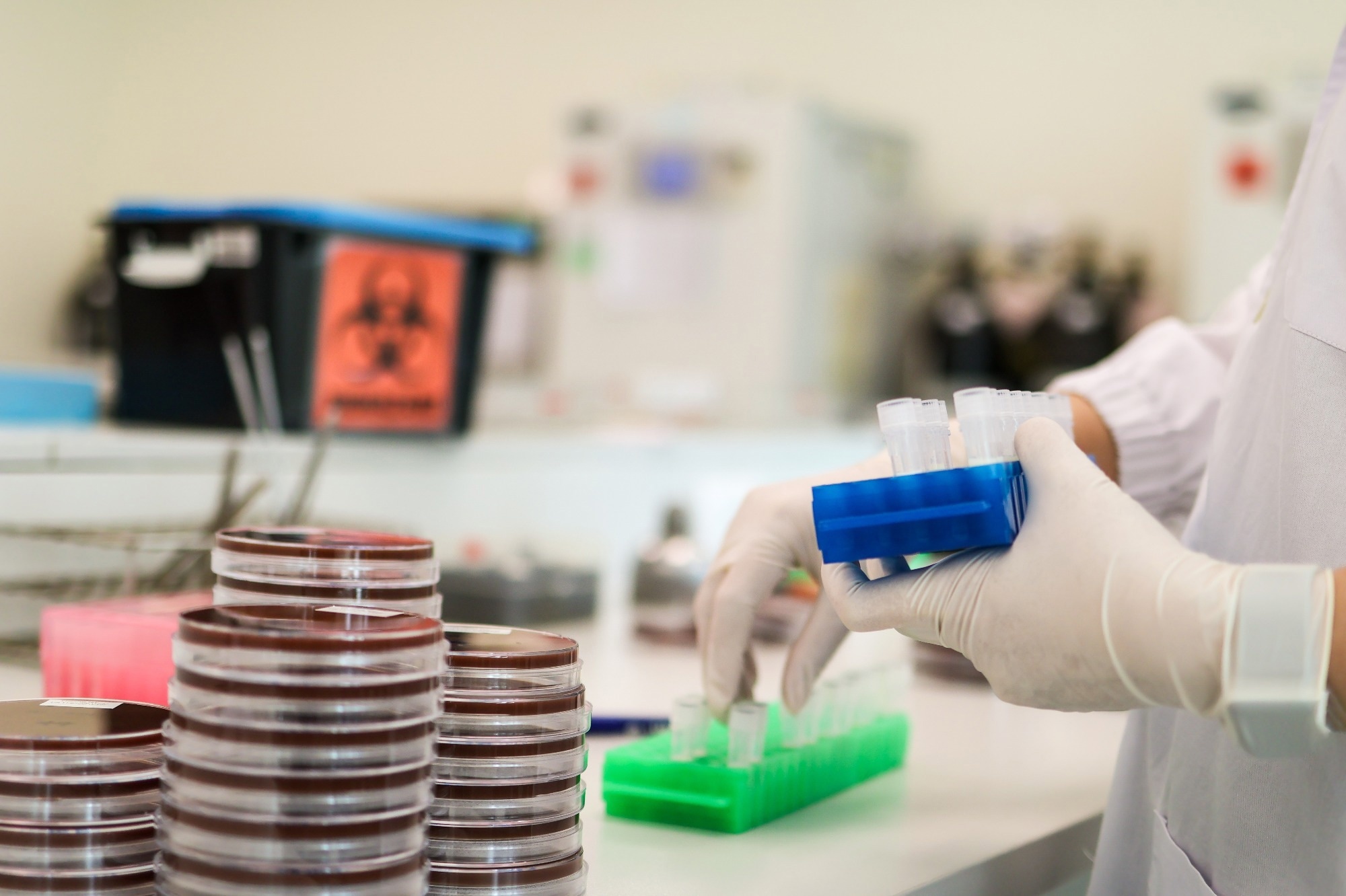Nosocomial or hospital-acquired infections are a major cause for concern in hospitals and intensive care units (ICUs), especially for patients who are susceptible because of lowered immunity or immunosuppressive conditions. The presence of antibiotic-resistant bacteria in hospitals further increases the health risk posed by nosocomial infections.
In a recent study published in The Lancet Microbe, a team of European scientists designed a novel approach for pan-pathogen deep sequencing to assess nosocomial infection risk and determine the extent of transmission of nosocomial pathogens in situations involving high patient burden, such as during pandemics.
 Study: Pan-pathogen deep sequencing of nosocomial bacterial pathogens in Italy in spring 2020: a prospective cohort study. Image Credit: enuengneng/Shutterstock.com
Study: Pan-pathogen deep sequencing of nosocomial bacterial pathogens in Italy in spring 2020: a prospective cohort study. Image Credit: enuengneng/Shutterstock.com
Background
Multidrug-resistant bacteria are a serious health concern in the hospital setting, with nosocomial infections substantially increasing the morbidity and mortality rates among hospitalized patients and contributing to the economic burden of healthcare.
Statistics between 2016 and 2017 indicate that in ICUs, the rate of nosocomial infections was close to 20%, while another study reported that close to 64% of drug-resistant bacterial infections were nosocomial.
The risk of nosocomial infections also increases during situations where the patient inflow into hospitals increases rapidly, such as during the coronavirus disease 2019 (COVID-19) pandemic.
Therefore, the management of nosocomial infections also involves pathogen surveillance, for which genomics has emerged as a valuable tool.
About the Study
In the present study, the researchers designed a deep-sequencing-based approach that can be integrated with standard diagnostic workflows for clinical surveillance of bacterial pathogens. This method combines the deep sequencing of bacterial cultures with the deconvolution of the data at the sequence type level.
They used this approach to characterize the population of bacterial pathogens in a hospital in northern Italy during the COVID-19 pandemic.
While hospitals in northern Italy already have a high burden of antimicrobial-resistant bacterial infections, the region was also one of the more severely affected ones during the pandemic and faced a high risk of nosocomial infections.
The study focused on the bacterial species that were the major contributors to the burden of antimicrobial-resistant bacterial infections, which included Acinetobacter baumannii, Enterococcus faecalis, Enterococcus faecium, Escherichia coli, Klebsiella pneumoniae, Pseudomonas aeruginosa, and Staphylococcus aureus.
The researchers aimed to identify the antimicrobial resistance-associated genes in these bacterial species, assess the distribution of these bacterial species according to the sample type and the hospital ward, characterize the genetic diversity of the pathogen, and examine transmission.
They also compared the deep-sequence data they generated with whole-genome data for single-colony cultures of these bacteria.
The study was conducted in a prospective cohort, and respiratory, rectal, and nasal samples were collected after standard diagnostic and routine screening procedures.
The samples were then cultured in different media to isolate and select the species of interest. These cultures were then used for deoxyribonucleic acid (DNA) extraction and whole-genome sequencing.
The deep-sequencing data was then used to detect species and sequence clusters and identify the genes responsible for antimicrobial resistance. The sequence alignments were then used to map and calculate pairwise distances for the single nucleotide polymorphisms (SNPs).
The sequences generated from the cultures in the study were then combined with published whole-genome sequences to conduct phylogenetic analyses.
Major Findings
The study showed that the approach of deep-sequencing bacterial cultures isolated from hospital samples is an effective method for the surveillance of pathogenic bacteria and controlling nosocomial infections.
The researchers identified 132 sequence clusters associated with pathogenic bacteria, of which 55 were identified multiple times in the samples. Intensive care units had the highest pathogenic bacterial burden, with the predominant pathogenic bacteria being A. baumannii, E. faecium, K. pneumoniae, and P. aeruginosa.
The pathogenic bacteria were also detected from multiple sample types from the same patient, which could potentially have been due to the severely low immunity of the COVID-19 patients but was also indicative of the difficulties in infection control during the early stages of the COVID-19 pandemic.
The prevalence of antimicrobial-resistant genes was also high in the samples. Samples from more than 40% of the patients in the ICUs showed the presence of several drug-resistance genes associated with extended-spectrum beta-lactamases and carbapenemase.
The high prevalence of antimicrobial-resistant bacteria indicated the ability of these pathogens to persist in various hospital niches.
The genetic diversity within these pathogenic bacterial species varied significantly. While K. pneumoniae and A. baumannii had closely related strains, S. aureus, E. coli, and E. faecalis had more distantly related strains.
These findings indicated that transmission within the hospital was the most likely mode of acquiring infections from these pathogenic bacterial species.
Additionally, the study found that this single-colony sequencing approach was able to distinguish between co-colonization and co-infections within the same patient.
Conclusions
Overall, the study showed that a pathogenic surveillance method involving the deep-sequencing of single-colony bacterial cultures is an effective method of identifying pathogenic, antimicrobial-resistant bacteria in the hospital setting.
Further research in this area should focus on comparing the costs, accuracy, and feasibility of this method, and its application for a range of pathogenic bacterial species.
Journal reference:
-
Thorpe, H. A., Pesonen, M., Corbella, M., Pesonen, H., Gaiarsa, S., Boinett, C. J., TonkinHill, G., Mäklin, T., Pöntinen, A. K., MacAlasdair, N., Gladstone, R. A., ArredondoAlonso, S., Kallonen, T., Jamrozy, D., Lo, S. W., Chaguza, C., Blackwell, G. A., Honkela, A., Schürch, A. C., & Rob. (2024). Pan-pathogen deep sequencing of nosocomial bacterial pathogens in Italy in spring 2020: A prospective cohort study. The Lancet Microbe. doi:10.1016/S26665247(24)001137.https://www.thelancet.com/journals/lanmic/article/PIIS2666-5247(24)00113-7/fulltext